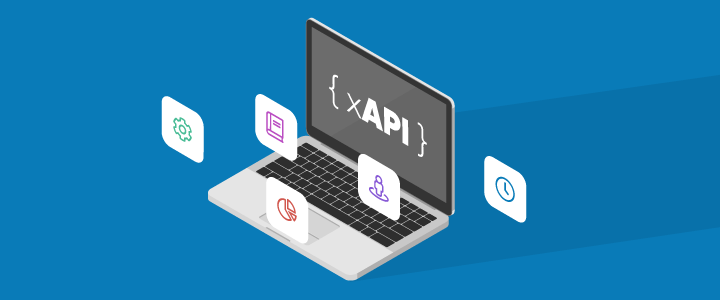
3 min reading time
What is xAPI?
Over the past three years, xAPI has emerged as the hot new standard for delivering online training. xAPI is often described as the next evolution of SCORM. While the SCORM standard isn’t going anywhere soon, xAPI has redefined some of the fundamental practices of tracking learning experiences. But what is xAPI? And why do so many experts believe it will soon become the default standard for eLearning content?
What is xAPI?
The SCORM specification was introduced by ADL in 1999. SCORM quickly became the standard around which a whole industry of authoring tools, learning management systems, and content development was built. But as eLearning continued to evolve, SCORM struggled to reinvent itself in order to keep up. While SCORM 1.2 is still the most popular authoring standard used in eLearning, its weaknesses triggered the development of xAPI.
Rustici Software believe that “learning happens everywhere”. That belief inspired Rustici’s research on how the SCORM
could be adapted to suit the next generation of eLearning. xAPI is the result of that work. Rustici chose the name project name “Tin Can” to describe the two-way conversations the technology would track as it made it easier for learning systems to communicate with each other.
The major difference between xAPI and SCORM content is the type of learning each can track. While SCORM is limited to recording online learning, xAPI can track almost any activity. As a result, xAPI delivers a far more detailed view of learner progress, within and beyond traditional learning environments, both online and offline. The kinds of learning it can track are almost infinite, including: reading a webpage, attending an event, borrowing a library book, playing a game, blended learning, and team-based learning.
How xAPI works
Information from xAPI compliant systems is passed in the form of statements. xAPI simplifies how learning is recorded by offering multiple ways to track these statements. Each statement is composed of three elements, a structure known as xAPI syntax:
- Noun (Actor – or the ‘who’ part of an action)
- Verb (The action)
- Object (The ‘what’ part of an action)
For example:
“I – did – this”
“Mary – completed – health and safety training”
“John – read – LearnUpon’s help guide”.
xAPI uses these statements to track data about learner actions and reports them back to a learning management system, Learning Record Store (LRS), or any application that understands the xAPI language.
The role of the Learning Record Store
An LRS specializes in managing data about learning experiences. Although it can be integrated with an LMS, the LRS itself is a separate product. An LRS isn’t essential to using xAPI. Once an LMS is xAPI compliant, it can track, store and report on relevant statements.
LearnUpon is not an LRS, for example, but stores, tracks and reports on xAPI statements for hundreds of customers. LearnUpon can also integrate with an LRS if you need advanced analytics functionality.
Some of the main LRS vendors include:
The benefits of xAPI
Its flexibility makes xAPI really suited to the current environment in which learners access all kinds of materials in all kinds of locations. We can now learn anywhere: while travelling to work, doing our jobs, or socializing with friends. xAPI allows us to track all of these learning experiences in one simple, consistent format.
Because xAPI tracks all learning experiences, it allows you to capture each learner’s activity and see the bigger picture. The term “quantified learner” has emerged to describe this ability to track individuated learning data using technology.
The data captured can be very valuable for an organization. It can be used to review previous learning experiences. Or it can be analyzed to plan for future projects by mapping what the learner knows against what they need to know. The analysis can be used to define goals that the learner can work towards.
The detailed nature of the data also makes it easy for managers to report on who has completed which training components. The result is a far clearer understanding of your learners’ training experience.
We’ve also written a post on how to publish your Articulate Storyline courses in the xAPI format.
The limits of the xAPI
Some organizations believe that adopting the xAPI standard will in itself deliver beautifully designed course content. That isn’t true. Using xAPI won’t alter the presentation or design of a course in any way. The xAPI spec won’t help you to improve user experience or the user interface.
Your content will still look and behave in the same way. xAPI only controls how data is tracked and stored. The quality of eLearning content will still be determined by the quality of the authoring tool and Instructional Design used to create it. And while xAPI is better at tracking eLearning on mobile devices, using the format won’t automatically deliver responsive course content.
Our approach to xAPI at LearnUpon
At LearnUpon, we took the same approach to xAPI as we did to SCORM support: we worked to remove all the pain associated with importing third-party content to the LMS. The result is that LearnUpon’s xAPI feature allows customers to import their content in seconds.



